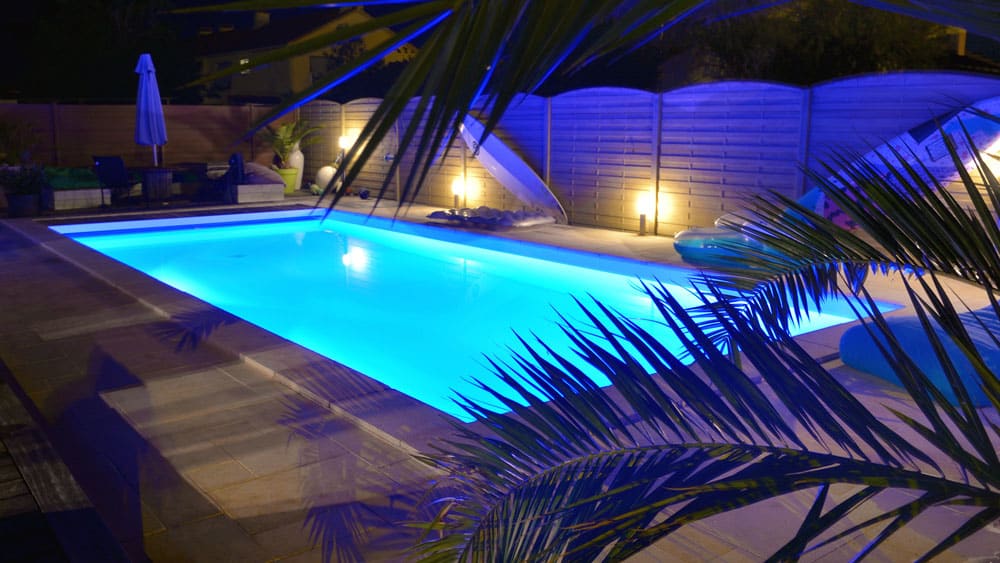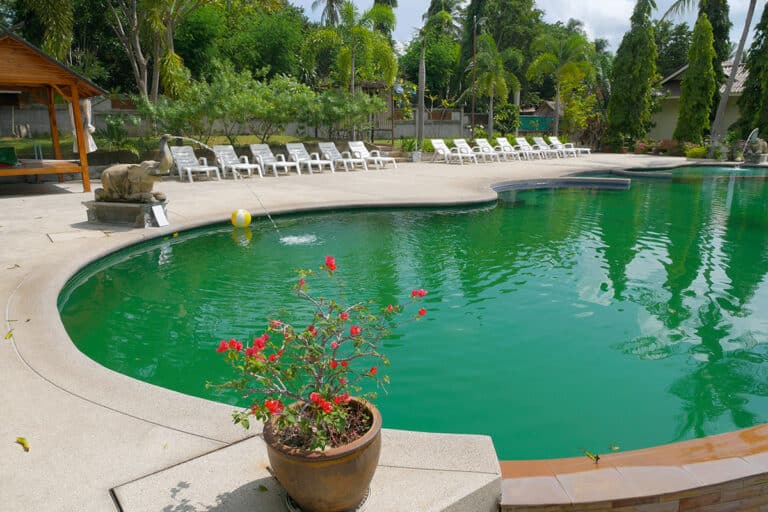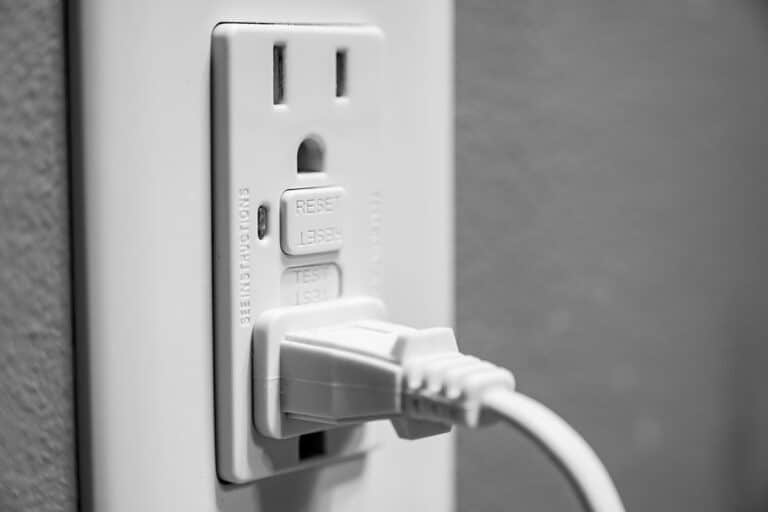Pool Lights
An underwater pool light is designed to provide enough light to illuminate the pool for swimmers and make it visible for those outside the water. A pool light is both a safety piece of equipment and a means to beautify the back yard pool setting.
Properly installed pool lights should be on a dedicated circuit protected by a Ground Fault Circuit Interrupter or GFCI. A GFCI will open the circuit powering the pool light when it senses electric current going through an unintended path (such as a person) and quickly shuts off power before fatal current can be delivered. To ensure safety, the GFCI must be tested periodically.
Pool lights have all conductors in the fixture itself encased in an epoxy resin in the back of the fixture which makes it very difficult for water to come in contact with the voltage being applied. If the fixture itself becomes super heated by the heat coming off the bulb, the protective resin could melt or become compromised. This is why you should never turn a pool light on above the water unless it is a quick ”on” to check a replaced the bulb. When submerged the water serves as a radiator which cools the interior.
Pool lights have made tremendous gains in safety over the last few years. In Austin, pool lights are now required to be 12 volt. As the light in your pool ages and unfortunately fails, it should be swapped out with a low voltage light. This means it will require a low voltage transformer to reduce the voltage from 120 to 12 volt. The additional piece of equipment is very affordable, and will make the amount of voltage going to the pool 1/10th the standard voltage.
A real world way to appreciate this is, let’s say there was stray voltage due to a failed GFCI that came in contact with the pool water. Someone swimming alone in the pool with a 12 volt light could theoretically survive the shock. With a 120 volt light installed under similar circumstances the outcome would likely be fatal.
Today, pool lights can achieve multiple colors by turning a color wheel in front of white light. Now that LED technology is being implemented, a dizzying array of colors can be produced including white in a single fixture. If you add fiber optic lights that can bend with the water it illuminates, you can start to appreciate how far the concept of pool lighting has come.
Pool lights are now safer, last longer and have become an important component of the backyard landscape. Even though the design of the lights makes them easier to repair, a licensed appliance installer electrician should be called to verify the integrity of the entire system and to bring your system up to code, if needed. The primary goal of any pool lighting system is safety.








